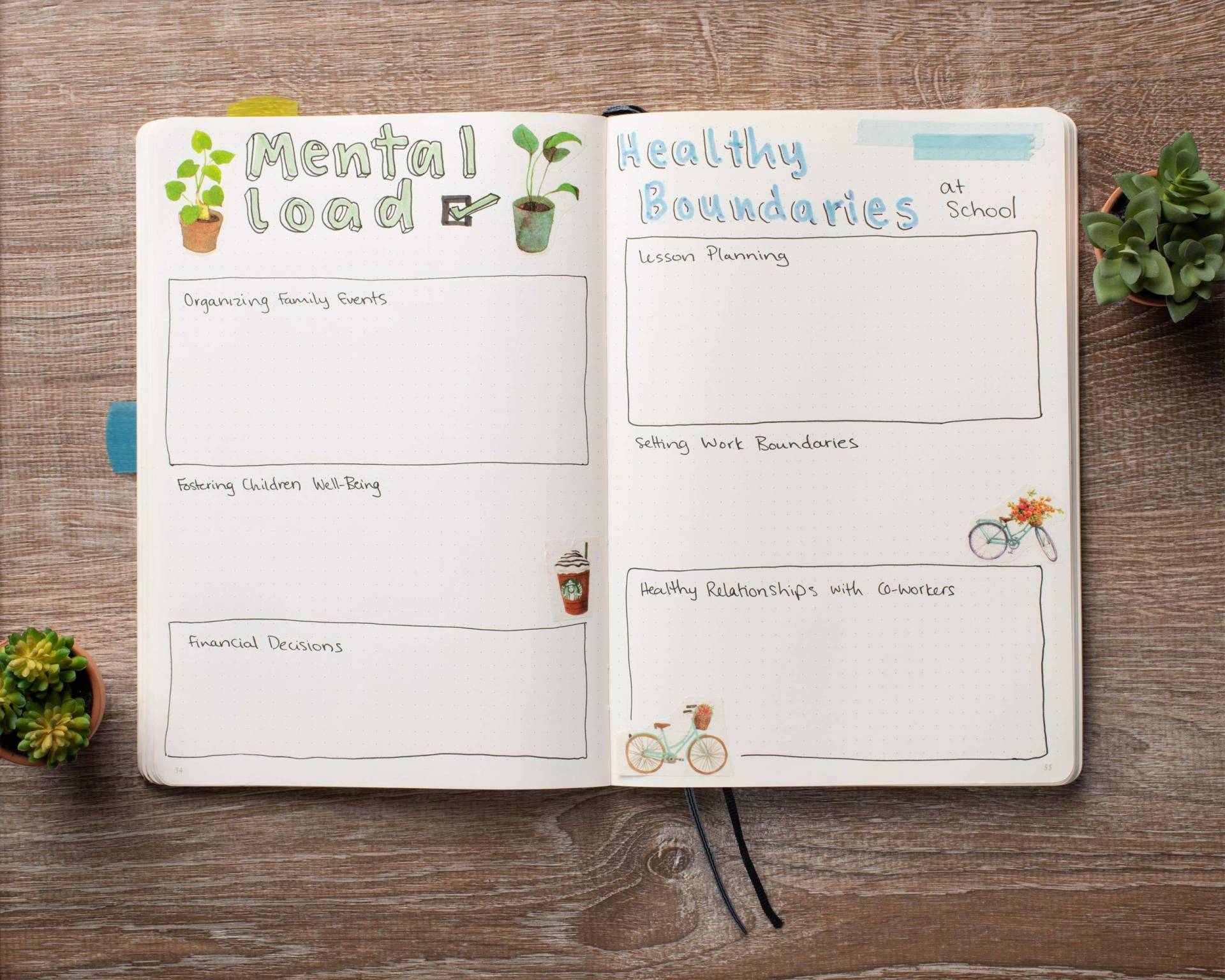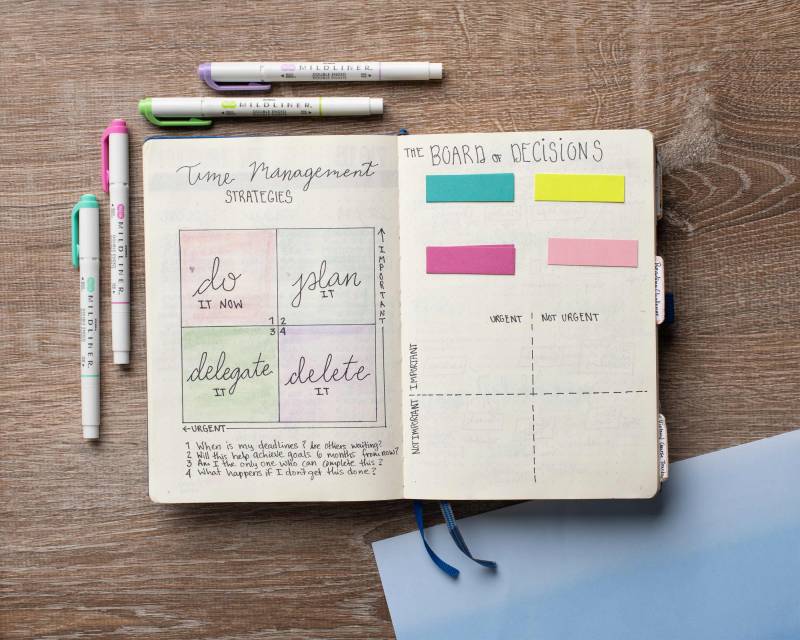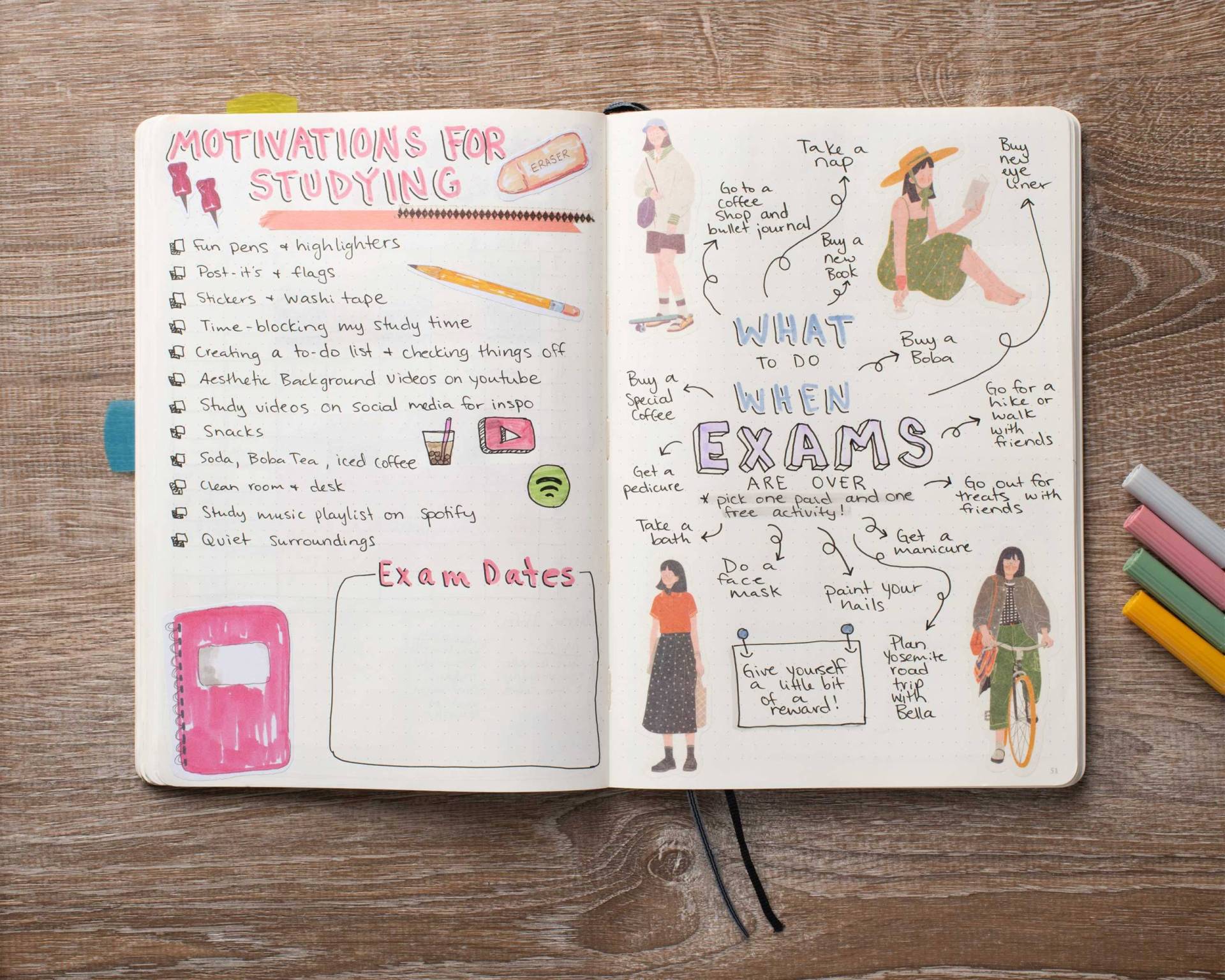If you’re shopping for a teacher planner, the options are plentiful. Coil-bound or binder rings. Notebook-sized, pocket-sized or in-between. Solid covers, patterned covers. Customizable layouts. Sections for lesson planning and prompts for goal-setting. Teacher and author Nichole Carter has tried many of these variations. But with each purchase, she found herself in a cycle. “I’d start using it, and then it didn’t fit my needs and I’d stop using it. And then I’d feel guilty that I spent money on something. I’d go back, but I’d have all these blank pages from the week or the month when I had put it down.”
Carter disrupted the cycle when she abandoned pre-made planners altogether and started working from a blank journal. Now she designs pages based on what makes sense for her current tasks, which can change throughout the year. Some weeks it might be a daily calendar of appointments. Other times it’s a to-do list and an inspirational quote. Periodically, she devotes pages to bigger picture goal-setting and reflections. The change has helped Carter prioritize her tasks, focus her time and set boundaries between work and personal life. It’s also provided a creative outlet and way to relax.
Carter’s approach evolved from her forays into sketchnoting and bullet journaling. In her book, Creative Journaling for Teachers, Carter shares tools and practical prompts for teachers who want to bring a bit of creativity and moments of reflection to how they organize their work. And whether they start from blank notebooks or pre-made planners, she hopes these strategies will help teachers gain a feeling of time affluence amid a stressful, demanding career.
Scheduling beyond class
Teachers have been trying to manage full plates for a long time. But the COVID-19 pandemic has simultaneously increased the pressure and prompted educators to reflect on their own self-care practices, Carter said. Like many teachers, she used to feel overwhelmed about how to get everything done. One of the creative journaling strategies that has helped her is time blocking. That means planning the day in chunks of time dedicated to a specific task or type of tasks, rather than simply tackling a to-do list in random order whenever a moment allows. Schools already use time blocking for student schedules, but teachers often don’t approach their non-instructional time this way, Carter said. In her book, she recommends looking at daily tasks, grouping them together and then slotting them into blocks with realistic estimates about the time they will take. She also suggests scheduling discrete blocks of time for less productive habits, such as social media or online shopping instead of letting them creep into every spare moment.




